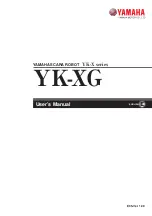
Preface
· Page v
Preface
FOREWORD
Robots are used in the auto, medical, and manufacturing industries, in all manner of
exploration vehicles, and, of course, in many science fiction films. The word "robot" first
appeared in a Czechoslovakian satirical play,
Rossum's Universal Robots
,
by Karel
Capek in 1920. Robots in this play tended to be human-like. From this point onward, it
seemed that many science fiction stories involved these robots trying to fit into society
and make sense out of human emotions. This changed when General Motors installed the
first robots in its manufacturing plant in 1961. These automated machines presented an
entirely different image from the “human form” robots of science fiction.
Building and programming a robot is a combination of mechanics, electronics, and
problem solving. What you're about to learn while doing the activities and projects in
this text will be relevant to "real world" applications that use robotic control, the only
difference being the size and sophistication. The mechanical principles, example
program listings, and circuits you will use are very similar to, and sometimes the same as,
industrial applications developed by engineers.
The goal of this text is to get students interested in and excited about the fields of
engineering, mechatronics, and software development as they design, construct, and
program an autonomous robot. This series of hands-on activities and projects will
introduce students to basic robotic concepts using the Parallax Boe-Bot™ robot, called
the "Boe-Bot". Its name comes from the Board of Education
®
carrier board that is
mounted on its wheeled chassis. An example of a Boe-Bot with an infrared obstacle
detection circuit built on the Board of Education solderless prototyping area is shown in
Figure P-1.
Figure P-1
Parallax Inc’s Boe-Bot™
Autonomous Wheeled Robot.










































